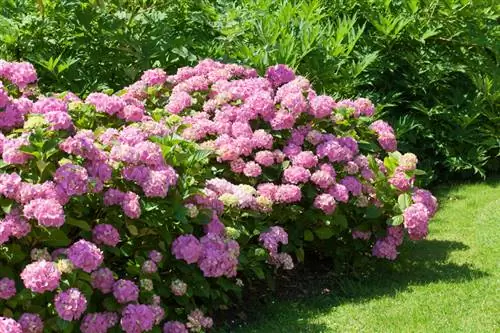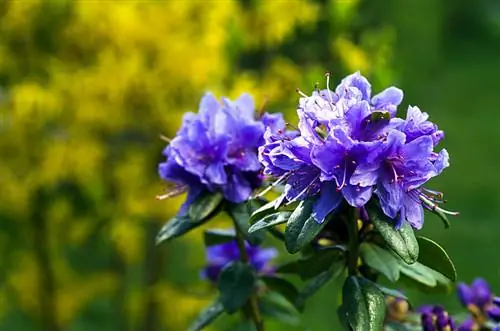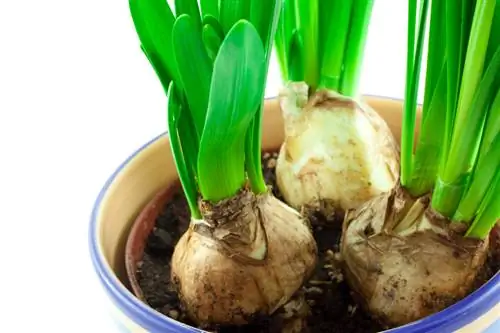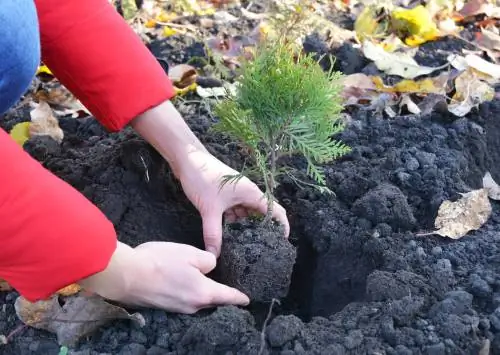- Author admin [email protected].
- Public 2023-12-16 16:46.
- Last modified 2025-01-23 11:20.
The wild forms of the hydrangea native to our gardens come from Japan, where it was cultivated for several hundred years before it came to Europe. Today, hydrangeas are among the most popular garden perennials because the richly flowering shrub requires relatively little care.
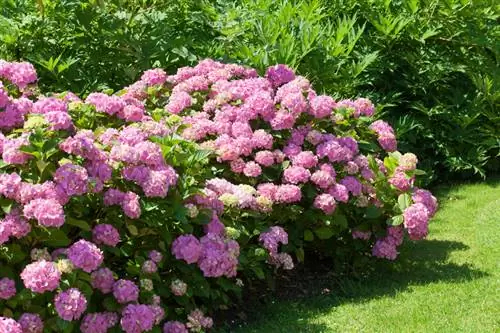
How do you properly care for outdoor hydrangeas?
To optimally care for outdoor hydrangeas, you should plant them in a partially shaded, wind-protected location with slightly acidic soil, water regularly, use special hydrangea fertilizer and protect the root area in winter. You should prune depending on the variety.
The right location conditions
Since hydrangeas are very loyal to the soil and should not be moved if possible, it is advisable to give the garden beauty the right location right from the start. The flowering plants prefer a place in partial shade; a sunny spot in the garden is also tolerated. So that the pretty flower balls don't suffer, it should be protected from the wind as much as possible.
Important: The substrate must be slightly acidic
Hydrangeas have high demands on the soil in which they thrive. A loose mixture of peat and compost soil is very suitable. Alternatively, you can improve the soil with rhododendron soil, the pH of which is in the slightly acidic range that is optimal for the hydrangea.
Water regularly
The Latin name Hydrangea means “water-drawing” and aptly describes the thirst of the hydrangea. Whenever the top few inches of soil feel dry, the shrub needs to be watered thoroughly. However, make sure that no waterlogging occurs. The irrigation water should be as soft as possible; rainwater is ideal.
Hydrangeas outdoors need to be fertilized regularly
Like all garden plants, the outdoor hydrangea also needs regular fertilizer. Special fertilizers that you can get from specialist retailers are rich in nitrogen and low in phosphorus. Alternatively, you can also use azalea or rhododendron fertilizer. Horn shavings or horn meal mixed with humus not only improve the condition of the soil, they also provide the hydrangea with all the necessary trace elements.
Pruning outdoor hydrangeas
The hydrangea does not necessarily have to be pruned; it is sufficient if you regularly break out the spent flowers. If pruning is necessary, it is important that you know the type of hydrangea that thrives in your garden. Many species produce flower buds in autumn. If these are removed when cutting, the hydrangea will only grow leaves the following year and will not have any flowers.
Overwintering hydrangeas outdoors
Most of the hydrangea varieties we offer are relatively hardy. Nevertheless, you should cover the root area of the plant with leaves, bark mulch or brushwood. Younger bushes are also grateful for warming fleece protection over the flowers.
Tips & Tricks
Hydrangeas bloom pink in neutral soil and change the flower color to blue in acidic soil. You can influence the color of your pink-colored hydrangea by using hydrangea blue or aluminum sulfate.

